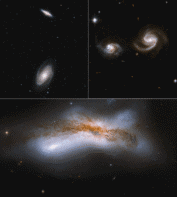
To increase their chances of survival, social organisms communicate in response to changes in resources, according to new research done in Germany. Scientists at the Max-Planck Institute for Extraterrestrial Physics, Heinrich-Heine-University and the Technical University of Darmstadt developed a general model describing groups of organisms or particles that move to produce or consume a certain resource and move collectively to improve their access to it. The team was led by led by physicist Hartmut Löwen and it reports its findings in the Proceedings of the National Academy of Sciences. As well as leading to a better understanding of social organisms, the research could help people who are designing systems of synthetic active particles.
In the Antarctic cold, emperor penguins must huddle up for warmth, but moving too closely together can cause them to overheat. Striking the delicate balance between the two states requires swarms of penguins to organize themselves in complex ways by balancing their attraction and repulsion. They are not alone – from bacteria seeking to optimize their surroundings’ oxygen concentration to foraging ants, groups of living organisms of different complexities show a great capacity for self-organization to achieve the greatest benefit for the collective.
Multiple attempts
Scientists have made multiple attempts to describe this behaviour by modelling individuals as particles with a field representing their external resource, for example, light intensity or oxygen concentration. A challenge is that these models are limited in their complexity. For example, the volume-filling models consider the effect of limited space in realistic situations. However, they describe the system of individuals in terms of optimizing the resource density instead of its field, which captures the more intricate way by which the resource changes in space.
The new model created by Löwen’s team describes the attempts of the individuals to optimize the resource field at their own position. Although both models lead to similar results in linear systems, in the non-linear regimes, the volume-filling models cannot capture the dynamic nature of the systems where the clusters of individuals continue changing, reaching different optimal relative positions or patterns.
Like atoms, the individuals are both attracted to and repulsed by their nearest neighbours, which normally leads to specific particle separations and the formation of packed structures. Yet, the researchers observed the formation of complex and aperiodic clusters of individuals. The nature of their model, using more sophisticated three-body interactions of high degrees of freedom, provides myriad solutions with multiple ways for the collective to reach their optimal state. This can be seen in the figure above, which shows the equilibrium positions of particles at different instances of time, with the background colours showing the value of the resource field. As time goes on (left to right), more particles reach a most favourable state (orange core) with a set of possible optimal positions (pink dashed lines) of higher density at the edges.
All for one or one for all
This is enabled by the existence of noise in the system, allowing individuals to go into the different configurations, true to the dynamic nature of living organisms. In fact, the patterns with high density on the outside really do resemble huddling behaviour in penguin colonies optimizing the temperature field.
In social models, one might expect that an individual must sacrifice for the greater good of the group, but here, having individuals acting only to maximize their personal access to resources, it still creates an optimized solution for the whole collective. The complex dependencies between the choices of the individuals and how they affect each other create what the researchers call an “invisible hand”, which helps the entire group reach its optimum state. In the case of limited resources or when the interests of the individuals are not aligned, there might be a different effect of the tension between selfishness and cooperation.
From mates to matter
The researchers hope that their work can be a stepping-stone for understanding complex phenomena at the intersection of biology, social sciences and physical systems of small particles. For example, the functions describing communicating organisms’ activities can also be applied to more sophisticated living systems.

Torque-driven phase separation of self-propelled particles has been discovered
Löwen and colleagues anticipate the use of similar models not only to describe the searching strategies of animals looking for food or mates, but even for helping to organize rescuers in disaster zones. In addition, the attractive-repulsive nature of the individuals in the model resembles that of charged colloids of nanoparticles. As such, similar models can be used to design systems of synthetic active particles that can be programmed to respond to external stimuli and move independently. These kinds of particles are promising for applications including chemical cleaning or drug delivery. The model can also be used beyond living systems to engineer artificial swarm intelligence, where the swarm can outsmart its individual members thanks to their unique communication.



